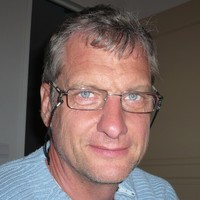- Worked during 35 years atThales Avionics with 10 years in flight management system advanced studies.
Retired since february 2017
Still interested in reading any paper in the area of avionics advanced studies of anybody all over the world.edit
For several years, the traffic in civil aviation has been increasing by about 5% every year. As a consequence, many ATC sectors in the world are saturated with diverse consequences such as increasing delays on aircraft departures and... more
For several years, the traffic in civil aviation has been increasing by about 5% every year. As a consequence, many ATC sectors in the world are saturated with diverse consequences such as increasing delays on aircraft departures and arrivals.
To improve the situation, the Airborne Separation Assurance System (ASAS) concept has been envisaged for many years as potentially powerful, because it aims at reducing effective separation between aircraft with a safety level at least equal to the current one.
To improve the situation, the Airborne Separation Assurance System (ASAS) concept has been envisaged for many years as potentially powerful, because it aims at reducing effective separation between aircraft with a safety level at least equal to the current one.
Research Interests:
The invention concerns the production of an avoidance path in the horizontal plane enabling an aircraft to resolve a route conflict with another aircraft bringing about a risk of collision in the next 5 to 10 minutes and which minimises... more
The invention concerns the production of an avoidance path in the horizontal plane enabling an aircraft to resolve a route conflict with another aircraft bringing about a risk of collision in the next 5 to 10 minutes and which minimises the negative consequences, on the aircraft flight plan, of the resulting diversion. The invention concerns a method for working out an avoidance path comprising two parts: a first jinking part with an initial heading such that the threatening aircraft adopts a path relative to the threatened aircraft tangent, on one side or the other, to the edges of the angle under which the threatening aircraft sees a protective circle drawn around the threatened aircraft with a radius equal to an accepted minimum distance, and a second part for returning to the initial route. Said method for working out an avoidance path can be carried out by a flight management computer which, once the evasive course has been accepted by the aircraft crew, continues to monitor said avoidance path by the automatic pilot system.
Research Interests:
The invention relates to compliance with the safety distances between aircraft travelling, in a queue, one behind the other, through a prescribed air corridor. It is more especially concerned with a process allowing an aircraft knowing... more
The invention relates to compliance with the safety distances between aircraft travelling, in a queue, one behind the other, through a prescribed air corridor. It is more especially concerned with a process allowing an aircraft knowing its position and those of the various aircraft flying in its close vicinity, for example by virtue of the ADS-B system, to manage by itself its separation distance with respect to another aircraft taken as reference. Such a process is an aid afforded to the crew of an aircraft and to the control authority regulating the traffic in the relevant air corridor.
Research Interests:
RÉSUMÉ A process for managing air speed of an aircraft in flight. The method includes a first step of determining a point on the flight path at which it is theoretically possible to comply with a required time constraint by following a... more
RÉSUMÉ A process for managing air speed of an aircraft in flight. The method includes a first step of determining a point on the flight path at which it is theoretically possible to comply with a required time constraint by following a pre-established speed profile. In a second step, a speed is computed and a fresh speed profile is determined. This is obtained by determining speed corrections segment-by-segment from the point up to the last modifiable segment. The speed change in each segment is restricted to a maximum value. The new speed is computed on the basis of the curve showing the flight time t as a function of the speed V. This curve is approximated by a curve satisfying an equation with three coefficients (C1, C2, C3): V=c 1 /t+c 2 /t 2 +c 3 /t 3 Compliance with time constraints are ensured by this method while meeting the requirements of the pilot and air traffic controllers.
